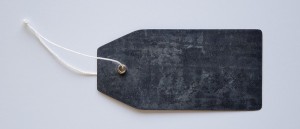This Bay Area startup connects you with a ‘repair artist’ who can fix your broken stuff
Nimble wants to make it easier for people to repair their items—which in turn will pressure companies to make products more fixable to begin with.
BY Adele Peters
When her air purifier broke, Stephanie Hoang did what most people do when they’re not sure how to get rid of something: she stuck it in her closet. It sat there for months. Then she learned about a new pilot for a service that matches low-cost “repair artists” with people in need of repairs. She signed up, and a week later, the appliance was fixed.
The service, called Nimble Repair, is in early testing in the Bay Area. Customers request repairs for small household items—anything from lamps and vacuums to luggage, clothing, or small furniture—and list their budget. A network of local repair experts responds. If there’s a match, Nimble will pick up the item. Then it brings it to the repair person and delivers it back when the repair’s complete.
“We’re trying to make repair as easy as possible,” says Kimberley Schroder, Nimble’s founder, who is in the process of launching the startup after piloting the service this spring as a student in California College of the Arts’ Design Strategy MBA program. “We figure out how to repair your item, find someone who can repair it, pick it up, repair it, and drop it off back to you. We make that process as streamlined as possible so that repair can be an even better option than throwing it in the landfill.” (Sojo, an online repair service for clothing in London, similarly offers pickups and drop-offs—in its case, via cargo bikes.)

Finding “repair artists”
Hoang, who’d gotten her air purifier through a donation during California’s 2020 wildfires, had used it almost daily until she accidentally tripped over the cord and it stopped working correctly. She thought that a repair wouldn’t be feasible.
“I first tried to repair it myself by wiggling the cord, taping the cord a certain angle, but eventually I decided it was beyond my skill to repair it,” she says. “I didn’t look for a repair person—I assumed it would be expensive to take it to a shop. Plus, it has a retail value of $40 and I got it for free. It would be cheaper to get a new one.” But Hoang, who is also a student at CCA, was eager to test the new service as soon as she heard about it. She ended up paying $25. “It felt great to give the air purifier new life,” she says.
Community-run “repair cafés,” where volunteers periodically help fix broken items at public libraries or other community spaces, are becoming more common. But Schroder wanted to reach people who might not know about the events or have time to attend them. (Typically, they also require active participation—a volunteer helps teach you how to repair your old toaster or sweater, but you have to do some of the work.) Nimble’s network includes some of those volunteers, who can now use the platform for a side gig and make a little extra cash. It also brings more business to cobblers and other old-school repair shops. Schroder says that she’s still fine-tuning the business model, but Nimble takes a small percentage while making sure that repairers are paid fairly and repair is accessible for customers.

Making repair accessible again
Repair was more common in the past when products were better designed for durability. (For example, this midcentury toaster that sells on eBay for more than $100.) Now, “products are designed to be disposable,” Schroder says. “They’re designed very cheaply and then they break easily and then it’s hard to repair them, so people just end up throwing them out.” Repair is often more complicated now because more electronics are built into products.
Still, she says, many products are still repairable if someone has the skills. “There’s someone out there who knows how to repair it, but you need to find them, and that’s part of what we’re trying to do,” she says. “It used to be easier for more people to just repair their own things or take it to the local shop.”
While the service is nascent now, Schroder hopes to expand throughout the Bay Area and eventually to other regions, as demand grows. (In the initial test in Berkeley, the response was so overwhelming that she stopped doing outreach because she couldn’t keep up.) She aims to make repair common enough that people begin to expect manufacturers to make their products more repairable. “The goal is that we make repair so easy that people think about repair more often,” says Schroder. “And then that will lead to them factoring repairability into their purchasing decisions. This is our theory of change.”

ABOUT THE AUTHOR
Fast Company
(6)








